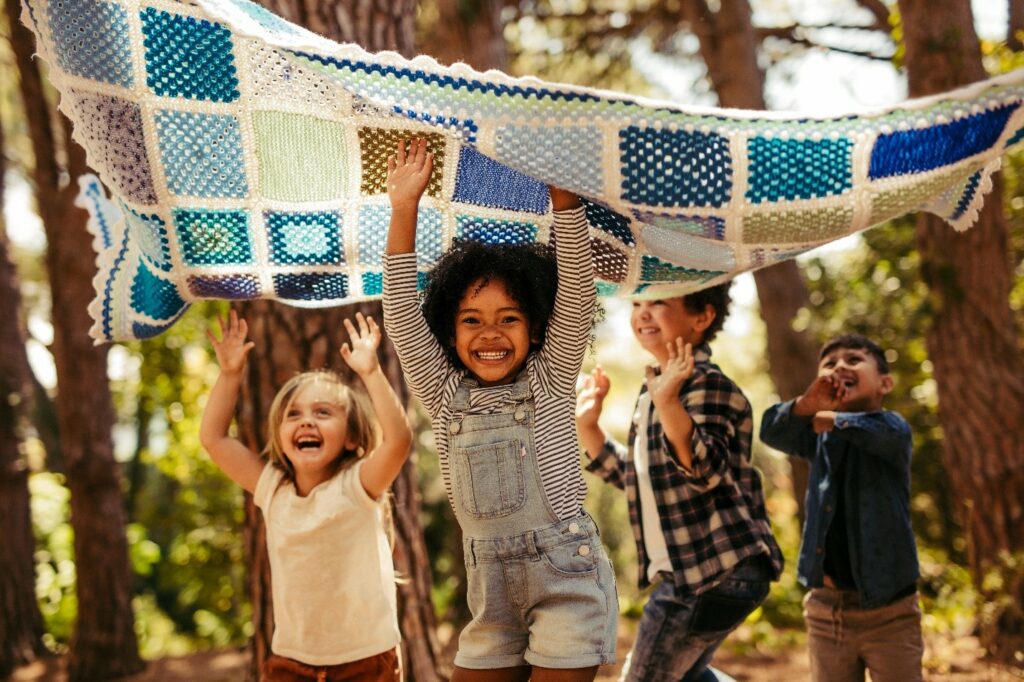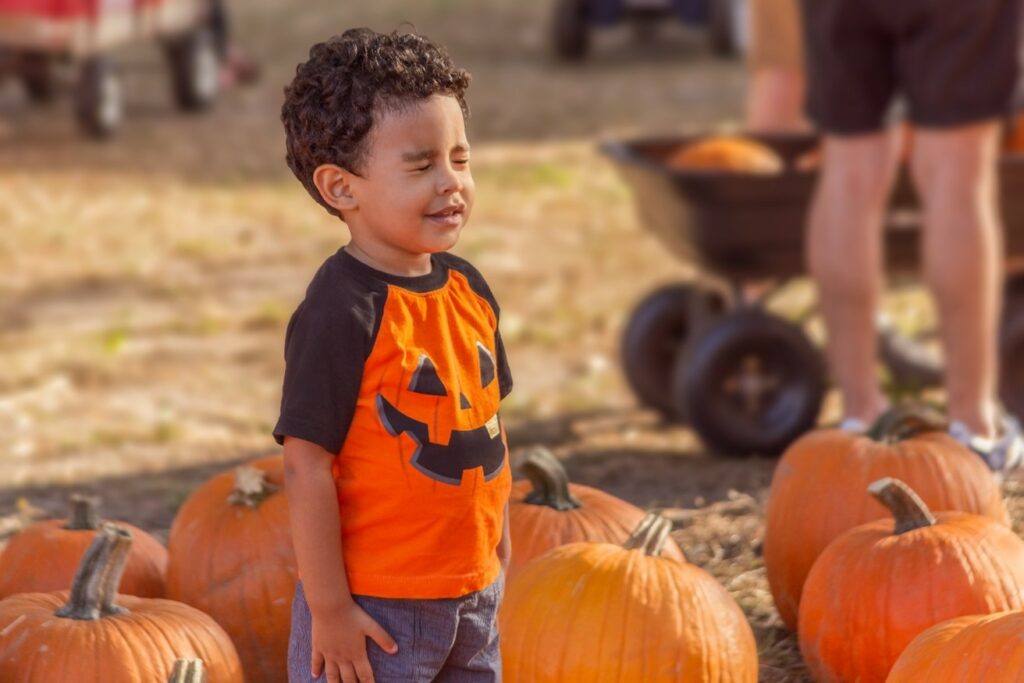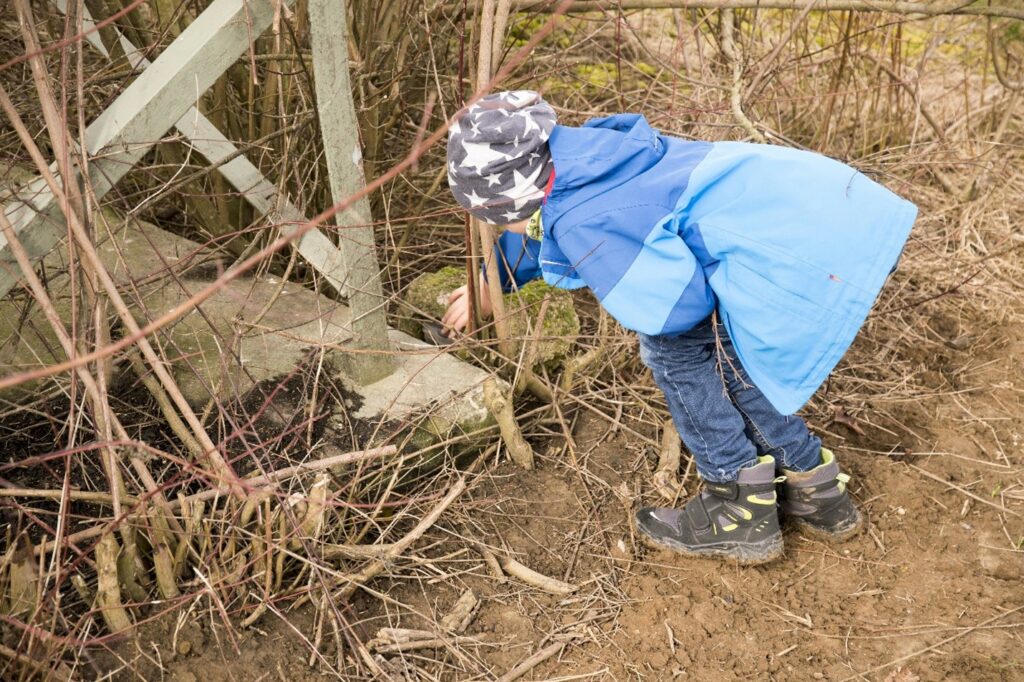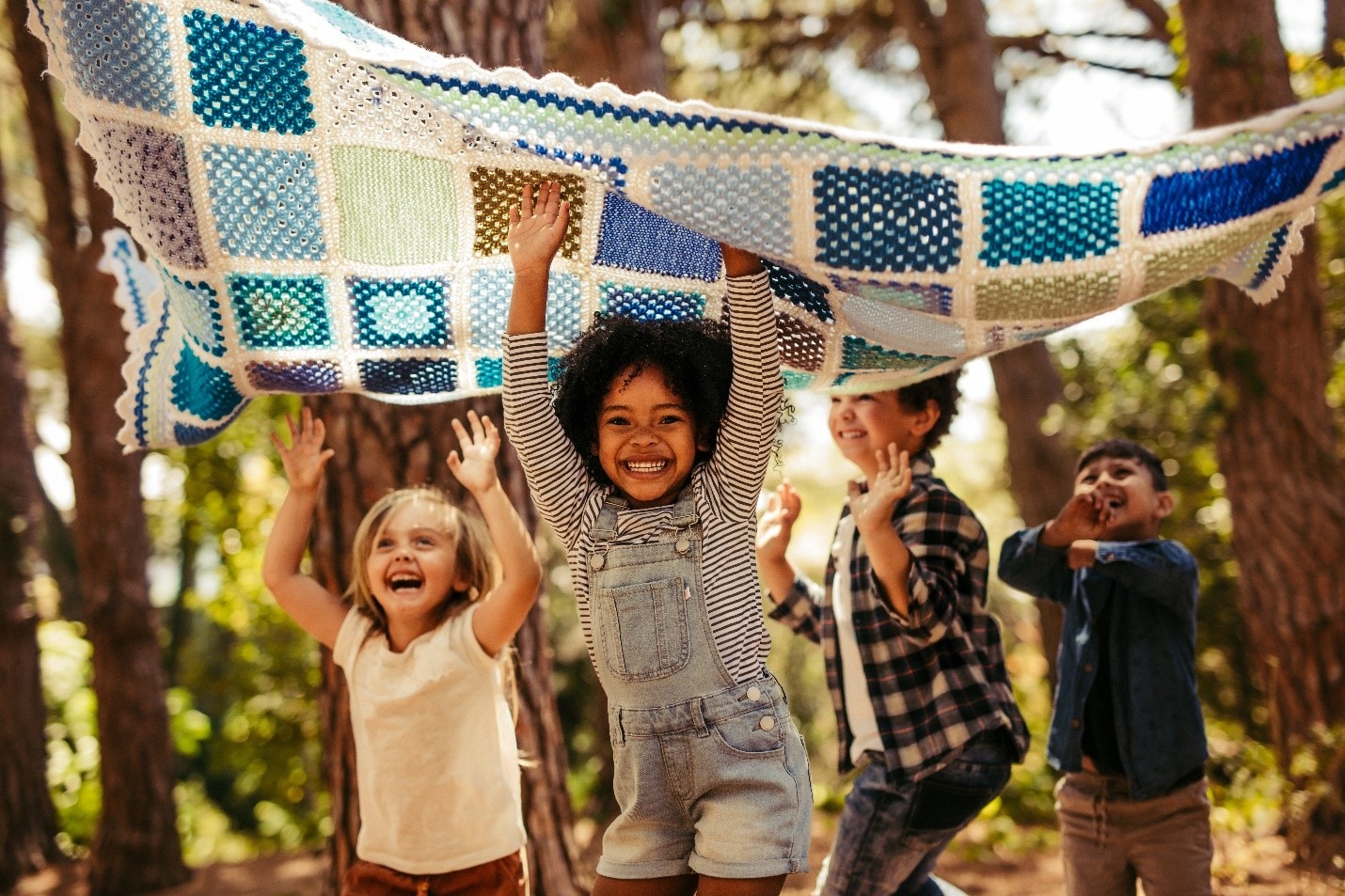Taking your child outdoors each day is probably already part of your healthy homeschool routine. In addition to play and exercise, there are a world of benefits and learning opportunities just ripe for the picking! Richard Louv, author of many books on the importance of incorporating nature into our own and our children’s’ lives, says, “Research suggests that exposure to the natural world – including nearby nature in cities – helps improve human health, well-being, and intellectual capacity in ways that science is only recently beginning to understand.”
Simply experiencing the slippery crunch of pine needles underfoot or the brilliance of the sun filtered through a leafy canopy can completely change our outlook and shift our thinking to the positive. This is true for your child as well, and what’s even better is that children have an innate sense of wonder about everything, especially nature! The benefits of being in nature are “naturally” there – they don’t require any effort or cost to gain the benefits or enjoy the experiences.

Free play in a natural setting allows your child to explore, create, and imagine on their own timeline with their own purposes. But if you’d like to create a more defined set of learning experiences for your child as part of your learning program, here are some ideas.
Defining and Refining the Sensory Experience
When we are in a natural setting, we pay attention to our surroundings in a different way than we do when we’re indoors. Our senses are called to attention, and we more fully experience things. Integrating the senses and increasing the awareness of what we are perceiving is a powerful learning tool.
- Think about ways to engage all your child’s senses. This can be done by pointing them out. For example, when playing in a grassy field, ask your child-what do you see? What do you hear? What are all the things you can feel/touch from where you are sitting? What can you smell? It may be that this is not a place or environment to taste things, but that certainly changes if you’re out enjoying a lovely spring rain!
- As your child becomes accustomed to doing this, begin to add variety to the question. When asking them to name what they see, have them cover their ears. When asking them to tell what they hear, have them sit quietly with their eyes closed. Gradually increase the time you sit with your eyes closed, just listening. These types of activities- “shutting off” one sense as you shift attention to another, helps children hone their awareness of the world around them.
- As your child starts to anticipate your sense-related questions, they’ll begin internalizing the questions. This is a way to help them build an important scientific practice, the practice of observation.
As your child develops their observational skills, start giving them more complex challenges, such as, “what do you see between the blades of grass? How many particles of soil are in a pinch between your fingers? Do you see anything alive on/in the ground? In the trees? In the air? Does the tree bark have a smell?

Tapping into Natural Engineering
So much of what children end up doing when they are left to their own devices can be classified as engineering. Children are forever building “prototypes” of different types and sizes and improving their creations to suit their needs.
- Help children gather items to create life-sized forts or structures to build, or to create miniature versions of shelters for their stuffed animals and toys. As they play, ask them what worked as they built their structures. What could have been improved? What other materials do they wish they had to make it better? What could they use instead of the materials they wish they had? Who might be a good partner to help them?
- A spontaneous stream of water after a rainstorm becomes an engineering design opportunity. Challenge your child to create a dam with found materials. Or have them design a way to redirect the stream. Have them create a pool, and then predict if it will overflow. Can the overflow be prevented? How?

- Nature’s engineers are everywhere. If your child does not know about a beaver and the dams and dens, they create, has never seen a nest up-close, or seen a honeybee hive, check out books at the library to read with your child. Then, during the next outdoor opportunity, look within the environment to see if you can locate evidence of nature’s engineers.
Nature is filled with masterpieces. Those masterpieces often present themselves in the form of recurring patterns.
- The friendly wispy clouds that look like brush strokes on a blue canvas or the repeating “scales” of clouds in the high sky on a bright and beautiful day have a scientific reason for being-and are different than the dark and foreboding clouds of a thunderstorm (that should be observed from inside until it passes!) The plates of the pine tree’s bark have an uneven pattern, while the stripes on a leopard frog are symmetrical and predictable. Help your child find the patterns in nature by pointing out a few. Then, start asking them to find their own and describe them. Ask them to count the number of elements of the pattern and see if they can predict when the pattern will repeat. What might cause a shift in the pattern?
- Patterns can also be heard! Bird calls are a perfect way to introduce multidisciplinary concepts so that your child can experience patterns across subjects. Have your child use his sense of hearing to identify a bird you see frequently. Have them listen for the pattern in the call or song, and then repeat the pattern as they mimic the sounds. How many times does the bird call? Switch senses and ask him to identify the bird’s colors and any patterning. Is the coloring vibrant? Dull? What might be the reason for these colors or patterns? As your child builds interest, provide field guides for identification, and resources on migratory patterns of birds. Then help your child “branch out” as they look for “their” birds within them.
- Provide a *sketchbook (see below) or unlined notebook where your child can create sketches and visualizations of what they are seeing and hearing, building their artistic lens and observational skills. As they are able, have them begin to add “field notes” to their sketches. This sketchbook becomes their own field guide, their location for data collection, and their personal collection of renderings of things in their world.
- Look for recipes on how to make paper. Have your child collect found materials to use for the paper. Once the pages dry, you can punch holes in the edges. To form a back and front cover, use sturdy recycled material, such as clean meat trays or cardboard flaps from a box. Punch corresponding holes in these and have your child lace string through the covers and the pages, creating their own sketchbook!



1 thought on “The Learning Bounty of the Great Outdoors”
Comments are closed.